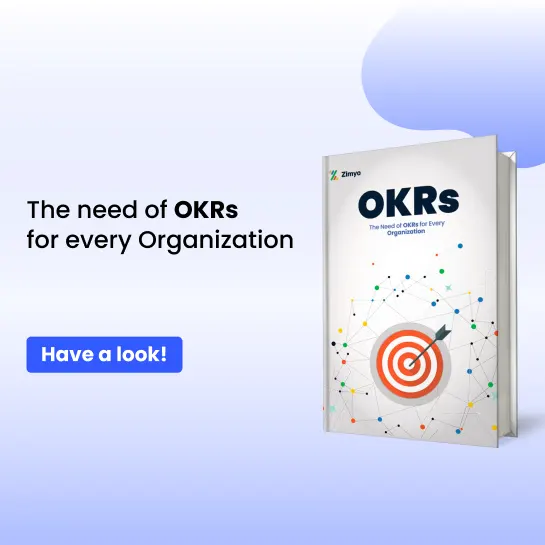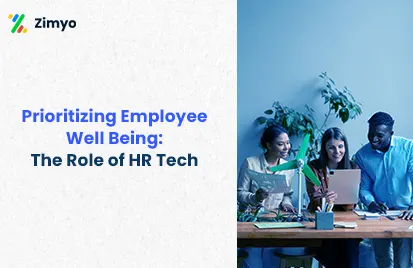Although over 96% of companies worldwide have extended some form of additional resources in response to Covid-19, only one in every six employees feels more supported right now
~ Mckinsey & Co.
In 2021, employee health and well-being are the two most crucial elements of running a successful business. And the responsibility to take proper measures to help your employees stay healthy both physically and mentally must come without a surprise to an employer.
Healthy employees are the biggest assets of a business in today’s pandemic hit era. According to studies, healthy workers are much more productive and less likely to be absent from work, ensuring a lower employee turnover. In addition to that, employees with healthy BMIs take up to 52% fewer days off for being sick in a year and are often back to work quicker post-illness. It’s also likely that proactive monitoring of employee health prevents long-term sickness in the future. Better employee morale and engagement and a healthier, more inclusive culture are just some of the benefits that follow.
2021 has seen a recent shift towards prioritising employee health. This has concluded in a major change in employee attitude, as they begin to prioritise different types of employee benefits compared to before. Today, for instance, employees prefer health and lifestyle benefits at work over the traditional rewards of salary, bonus, or vacations.
A recent Global Talent Trends study revealed that while competitive pay and in-work benefits still sit on top of the “desired employee benefits” list, when it comes to attracting and retaining top talent, most candidates today look for flexible working opportunities and a commitment to their health and wellbeing. This demand has only increased during the pandemic, therefore, as an employer, it is important to have an effective employee-health-support plan in place to stay on top to attract the best talent in the market. Some of the best practices to support employee health include-
1. Adopt an Asynchronous Schedule and Communication Practice
One of the easiest and heavily effective measures that an employer can deploy to prioritise employee health is offering asynchronous and flexible working hours and communication practices.
Being in front of a screen for more than 10 hours a day and engaging in too much virtual communication can contribute to high levels of stress and fatigue and leave employees with very little time for actual work. Therefore letting your employees decide and organise their work in a personalised way that they feel would best help them avoid burning out can be a healthy practice for your business.
Although this practice can help is highly recommended to cut down employee fatigue and stress, it doesn’t mitigate the need for health insurance, employee assistance programs, other forms of health and well-being support, or for entirely dropping real-time communications.
Asynchronous schedules provide employees the lost flexibility that they seek as remote workers to structure their workday in a way that supports their overall well-being best. This could include be- starting the day with half an hour of exercise, yoga, or mindfulness, taking a short walk when feeling stressed or overwhelmed, assisting with childcare, or scheduling weekly therapy sessions during the day.
Apart from the well-required flexibility, the practice is also appreciated for putting some degree of control back into the hands of employees.
Asynchronous communications help in breaking the link between maintaining an online presence and an employee’s daily productivity by switching the primary focus from the “number of hours worked” to the “actual results achieved”. This helps employees to stay motivated and productive in real-time.
2. Use Data to Understand Patterns in Behaviour
The pandemic has revolutionised digital health in the UK. Businesses today see a rising number of employees using health and fitness apps. And this trend has successfully intensified health consciousness among the workforce.
Research shows that 61% of employees who monitor their health make and encourage healthy lifestyle changes.
The increasing popularity of health apps has added a rather justified pressure for employers to look after the health of their staff and provide them with tools, resources, or gadgets that may help them to live healthier professional and personal lives.
Top UK employers such as Jaguar Land Rover, Siemens, and the BBC have embraced this digital health and wellbeing monitoring trend by providing their employees with precise physical monitoring of vital health metrics such as their BMI, blood pressure, body fat level, heart age, and more. Assessing the data received from these monitoring activities has helped these top players to build a highly effective employee-health promotion plan.
3. Build a Health and Well-being Intensive Culture
Culture is what dictates all professional lives in a business environment (C-suite, managers, workforce, staff, everyone), and is the hardest element to alter at once. However, with the shift towards remote work, every policy in the company has to go through an alteration, even the company’s culture. Therefore, employers must learn how to embrace change, initiatives, and welcome dynamism into their organisation’s culture as soon as possible.
As an employer, one can activate and initiate the change of values, beliefs, and cultural norms to guide their employees’ behaviour. One way to guide employee behaviour is by providing mental health training to managers. It makes all the sense in the world since managers are the ultimate link between the top executives and bottom workers in an organisation. This training can mean wonders and provide managers with the right tools and knowledge to spot when someone else is struggling.
Another way to drive change as an employer and manager when shifting towards a well-being-intensive culture is by taking the first step on your own. It is natural for employees to stand confused about whether a new behaviour would be acceptable in their work environment. That is, unless someone in a position of authority is seen practicing it. Therefore, the more welcoming managers would be of setting an example, the more engagement in terms of employee well-being will be received.
4. Run Campaigns to Promote Healthier Lifestyles
Almost everything that you want to do, would require you to set the pace by creating awareness in your surrounding. When it comes to employee health, it should ideally be approached via themed campaigns. Such campaigns would not only promote a healthy lifestyle but would also improve engagement among the workforce.
- Offering a subscription to health articles and newsletters
The main challenge when planning to execute a healthy campaign in an organisation is motivating the employees to take a closer look at their health. The best way to do this is by sending daily health articles and newsletters to their emails as health promotional activities.
- Organising healthy potlucks
Conducting healthy potlucks once every month can do a wonderful job as an employee-health-support activity. In these virtual gatherings, managers can encourage employees to get nutritious food and simultaneously strengthen workplace relationships. These potlucks can also be complement with different health themes such as Go Green, All Fruits, Protein Power Meal, Bye Bye Calories, etc. With a higher frequency of such activities, healthy eating can be eventually turned into a habit.
- Appointing a health ambassador
People love watching people from the same background become role models to encourage personalised ways of change. For your health-support campaign, you can find someone who is both health-conscious and successful in your workforce to act as a mentor and encourage a healthy lifestyle. Similarly, the title of “Health Ambassadors” can be assigned to let them be the face of good health in the organisation. There can be various contests to grab this title.
- Conducting smoke cessation campaigns
The ever-increasing workload has made smoking a pervasive habit among professionals today. Nicotine is the unrequited fuel that adds to heart and lung-related health problems. On the other hand, quitting helps to achieve better stamina, mitigate chronic diseases, improve lung functioning, and more.
A smoke cessation campaign at work can be a great employee-health promotion activity. The virtual campaign can include talks about the adverse effects of smoking, demonstrating ways to leave smoking, hiring a life coach to take quitting sessions, and incentivising employees’ efforts to leave smoking.
In 2021, the only way to stay on top of the talent recruitment market is by committing to employee health and well-being thoroughly. The only way to ensure the best employee-health results within the organisation is by introducing (and encouraging) healthy behaviour among the workforce – with intentional policy changes.
The possible changes could be as major steps as planning and executing employee assistance programs or taking as tiny steps as banning videoconference calls on a Friday. Every change that you make in your company policies to improve your employee’s health reflects your intentions. And today, the new talent of the world craves nothing more than an organisation that has the intention to appreciate its employees, their health, and their overall well-being.
Also Read: What Makes a Good Manager? 5 Skills To Be Successful!







